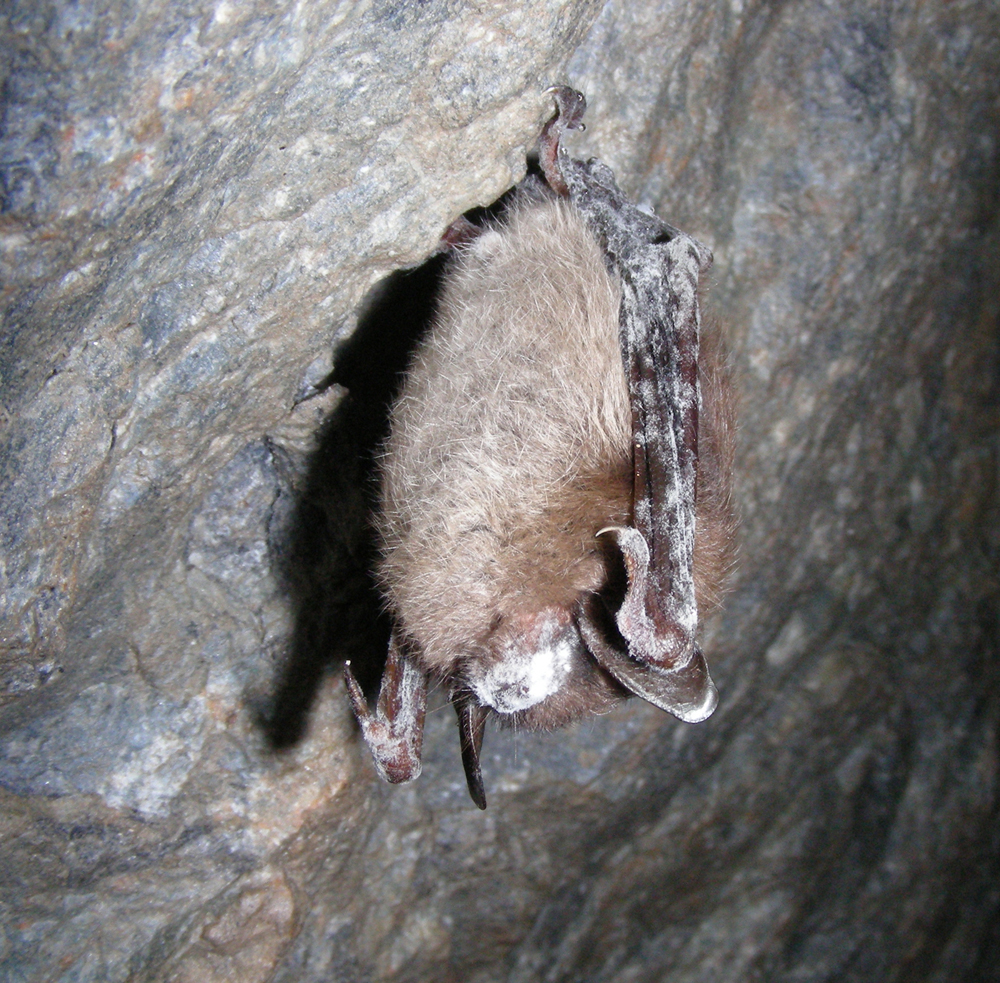By Alexandra DeMarco
The introduction of a deadly disease to any area raises ecological concerns, but the state’s situation is unique.
Last month, the U.S. National Park Service discovered bats with white nose syndrome at Devils Tower National Monument in Wyoming, marking the first known cases of the fungal disease in the state. Because all treatments and vaccinations for the often-fatal sickness are still in the experimental phase, white nose syndrome could rapidly spread through the state, experts say.
The introduction of a deadly disease to any area raises ecological concerns, but Wyoming’s situation is unique. Bat species that have never been introduced to the illness live on either side of the state — and there’s no telling how they will react or whether the disease could continue to spread west beyond Wyoming.
“We’re on the eastern edge of a whole suite of species that are considered western bat species,” said Nichole Bjornlie, a nongame mammal biologist for the Wyoming Fish and Game Department. “We’re on the western edge of a whole suite of species that are considered eastern bat species, and so we don’t know for sure. There’s a number of species that have never been exposed to white nose or to the fungus that causes it.”
The new cases are also in a difficult-to-observe area, said Jonathan Reichard, the assistant national coordinator for white nose syndrome, or WNS, for the U.S. Fish and Wildlife Service.

In the eastern United States, where WNS is common, scientists typically study colonies with the disease in the late hibernation season. However, fewer colonies out west are known to scientists, and the colonies can be difficult to access during the hibernation season, Reichard said, meaning scientists often can’t observe western bats until they leave hibernation. Because the disease can’t survive on bats in warmer temperatures, it’s difficult to accurately survey its prominence in areas like Wyoming.
“We’re slightly removed from what the direct observable impacts are, and so again, that work on the ground to understand where the bats are and really get a sense of how they’re responding is important, is critical,” Reichard said.
White nose syndrome is caused specifically by the Pseudogymnoascus destructans fungus. Pd is likely endemic to Europe and was accidentally introduced to North America by humans, similar to the way humans spread the “salamander devourer” Bsal fungus across the world.
Bjornlie said she was disappointed but not surprised when the National Park Service found white nose syndrome in Wyoming. Scientists first found spores of P. destructans there in 2018 but no infected bats. Bats on the South Dakota side of Devils Tower, however, had already died from white nose syndrome. It was only a matter of time.
The exact mechanics of how Pd causes white nose syndrome, first detected in 2006, remain a mystery. Essentially, the fungus grows on hibernating bats’ skin and causes them to prematurely wake, move around and burn body fat too quickly, which can be fatal. Pd sometimes leaves a white coating on bats’ snouts, giving the affliction its name.
Reichard said there are several ideas for how exactly the fungus causes bats to wake up when infecting their skin tissues, such as causing itching or inflicting an electrolyte imbalance that the bat attempts to resolve through movement.
“The electrolyte imbalances may be tolerable for a little while, but as fat availability dwindles, they no longer retain the energy source to combat that imbalance, so it’s sort of a calculator of resources availability, and that resource is fat,” Reichard said. “The bats can adjust to an extent, but when they run out of that resource, when they run out of that energy store, they can’t respond anymore.”
Certain bats can survive the disease. Which factors decrease mortality aren’t confirmed, but scientists suspect that larger bats have a better chance of withstanding the fungal infection, Bjornlie said.
The disease is primarily spread through bat-to-bat contact, although bat-environment contact, such as a bat contacting a surface with the fungus, is also a factor. For this reason, people should be mindful of only bringing clean items into caves that have not been exposed to WNS.
“Dirty gear stays in dirty places, clean gear only in clean places,” Bjornlie said.
As major pollinators and insectivores, bats play a vital role in the North American ecosystem, but their position is under threat. White nose syndrome continues to move west, possibly putting more colonies at stake, and without the flying mammals, the ecosystem won’t thrive.
Alexandra DeMarco is a senior at the University of Tennessee majoring in journalism with minors in environmental studies and French. She is a science writing intern at Oak Ridge National Laboratory and former intern at the Nashville Scene. She also previously worked as editor-in-chief of UT’s student newspaper, The Daily Beacon. Follow her on Twitter @alydemarco or email her at ademarco@vols.utk.edu.
This story was produced as part of NASW's David Perlman Summer Mentoring Program, which was launched in 2020 by our Education Committee. DeMarco was mentored by Ashley Yeager.
Main image: Bats at Devils Tower National Monument (shown) have tested positive for white nose syndrome. Credit: Bradley Davis/Creative Commons.


